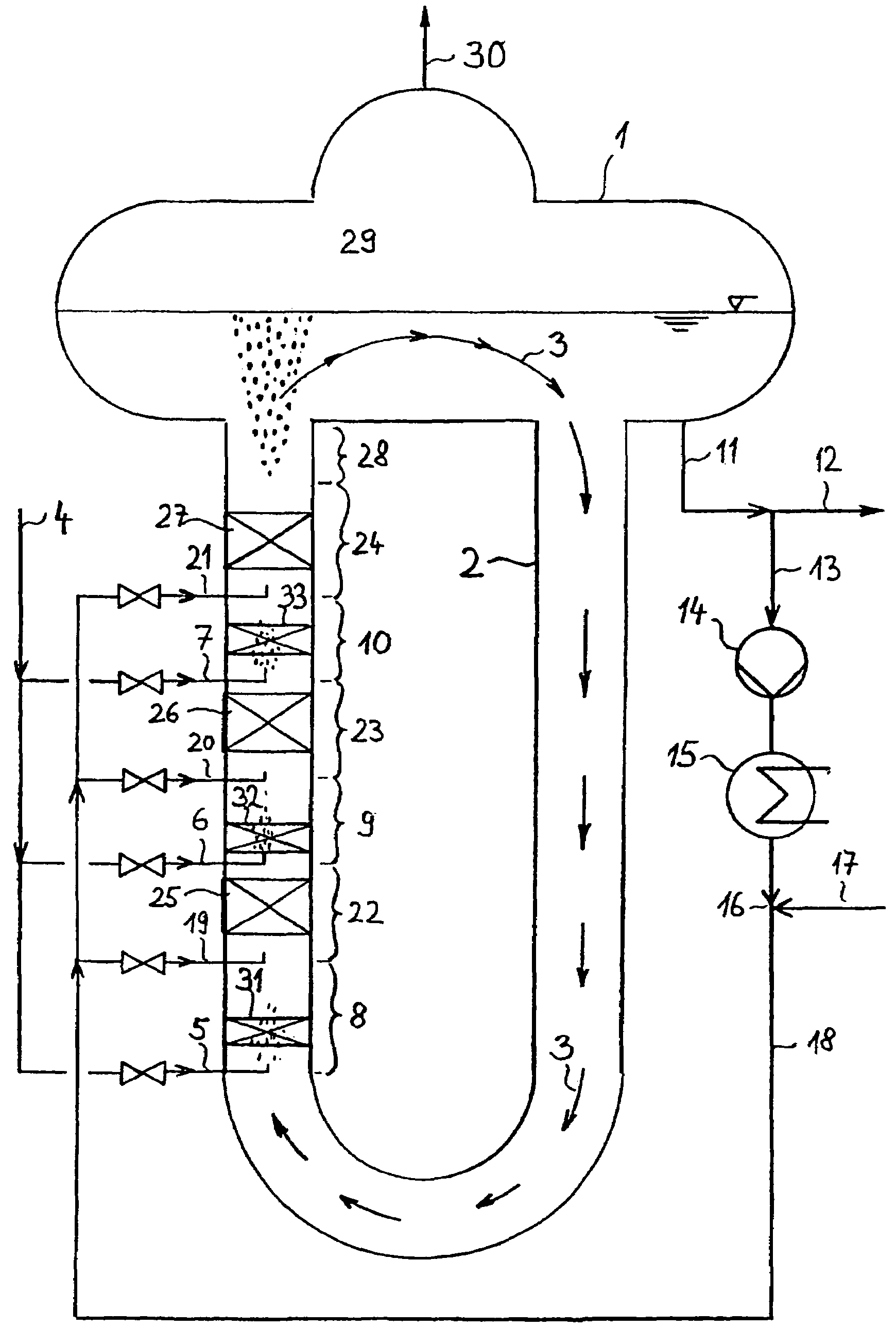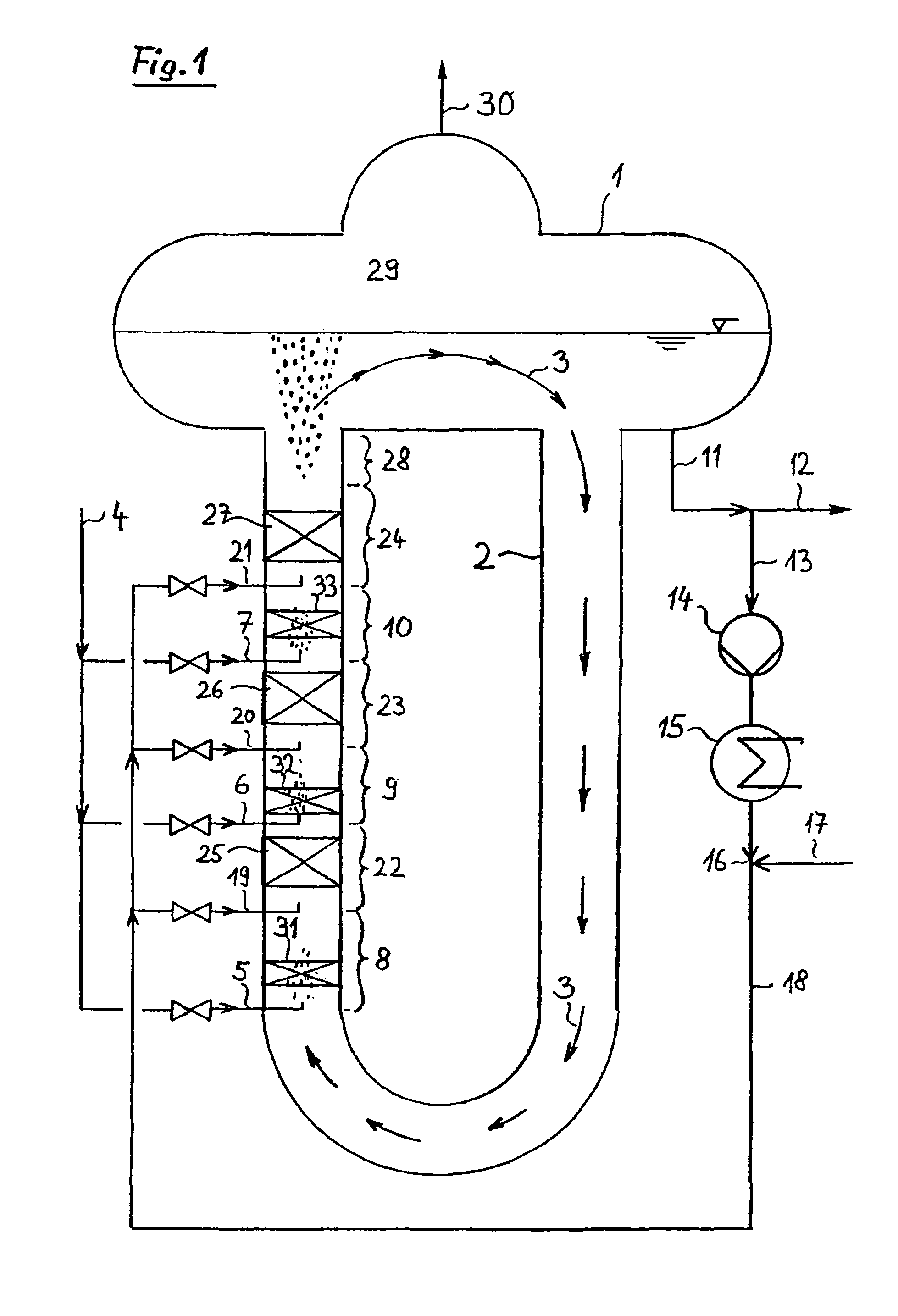Method and device for producing 1,2-dichlorethane by means of direct chlorination
a technology of 1,2-dichloroethane and direct chlorination, which is applied in the field of process and a device for the production of 1,2-dichloroethane, can solve the problems of difficulty in increasing the capacity at a later stage, and achieve the effects of reducing pressure, excellent part-load performance, and deactivating individual feed points
- Summary
- Abstract
- Description
- Claims
- Application Information
AI Technical Summary
Benefits of technology
Problems solved by technology
Method used
Image
Examples
Embodiment Construction
[0026]Gaseous pressurised ethylene 4 is distributed via control valves to ethylene feed points 5, 6 and 7. The ethylene feed points are designed so to produce fine bubbles, symbolically represented by dots in FIG. 1, which can easily dissolve in the dissolving sections 8, 9 and 10. The dissolving sections 8, 9 and 10 may optionally be equipped with static mixers 31, 32 and 33.
[0027]The chlorine to be added is first dissolved in EDC. Part-stream 11 of the produced EDC is withdrawn from degassing vessel 1 and split into EDC stream 12, which may also be an intermittent bleed stream, and solution stream 13. Solution stream 13 is transferred by pump 14 to cooler 15 and subsequently to chlorine admixture point 16 where the gaseous chlorine 17 is added. Chlorine solution 18 is distributed at a controlled rate to chlorine feed points 19, 20 and 21 and injected into loop 2 via a nozzle which produces the maximum possible turbulence.
[0028]Reaction sections 22, 23 and 24 which serve to run rea...
PUM
 Login to View More
Login to View More Abstract
Description
Claims
Application Information
 Login to View More
Login to View More - R&D
- Intellectual Property
- Life Sciences
- Materials
- Tech Scout
- Unparalleled Data Quality
- Higher Quality Content
- 60% Fewer Hallucinations
Browse by: Latest US Patents, China's latest patents, Technical Efficacy Thesaurus, Application Domain, Technology Topic, Popular Technical Reports.
© 2025 PatSnap. All rights reserved.Legal|Privacy policy|Modern Slavery Act Transparency Statement|Sitemap|About US| Contact US: help@patsnap.com


